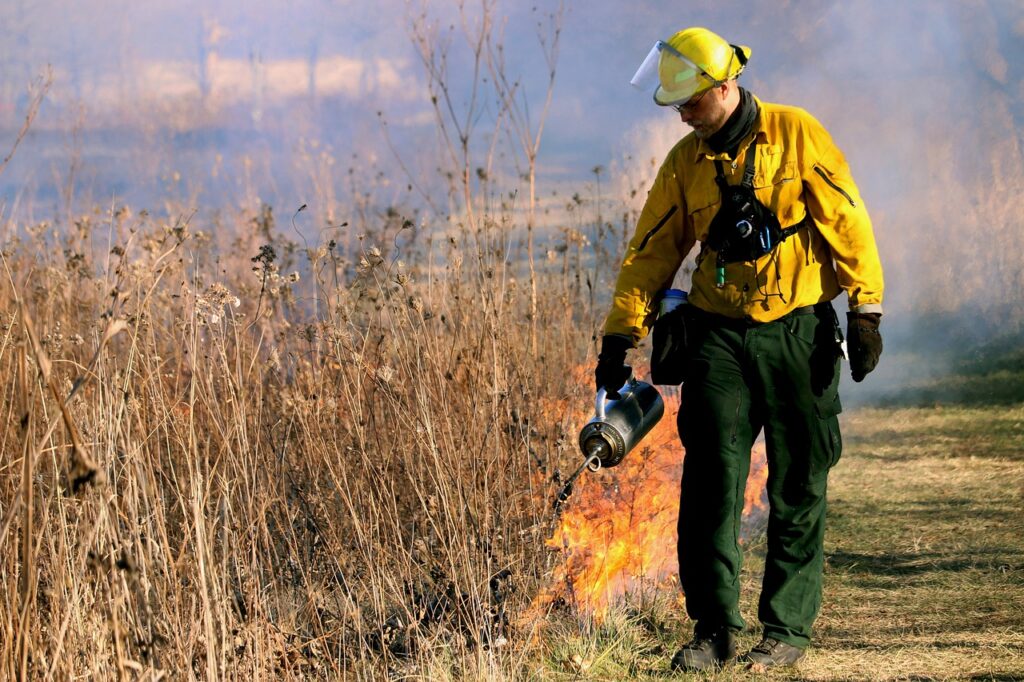By Debbie Bunch
August 26, 2024

UC Davis Offers Wildfire Preparedness Plan for People with Chronic Respiratory Conditions
The news is filled with reports of wildfires around the country, and for the 34 million people in the U.S. living with chronic respiratory conditions, these fires and the smoke-filled air they generate can significantly affect their health and well-being.
A multidisciplinary team from UC Davis Health has developed a real-time action plan aimed at helping health care providers help people with lung disease better handle the poor air quality that results from wildfires. The plan takes a population health approach and includes these components —
- Identifying clinically at-risk and underserved patient populations using well-validated, condition-targeted registries.
- Assembling multidisciplinary care teams to understand the needs of these communities and patients.
- Creating custom analytics and wildfire-risk stratification.
- Developing care pathways based on wildfire-risk tiers by disease, risk of exposure, and health care access.
- Identifying outcome measures tailored to interventions with a commitment to continuous, iterative improvement efforts.
Respiratory therapist care managers use the registries developed through the initiative to identify patients with COPD or asthma considered at high risk for hospitalizations or emergency department visits within 12 months, and wildfire preparedness interventions are direct towards these patients.
“We have seen population health approaches be successfully implemented to support patients with dementia, chronic kidney disease, and cancer,” said Reshma Gupta, chief of population health and accountable care at UC Davis. “Using this model, we can adapt to the threat of poor air quality from wildfires and adopt a proactive approach to meet the needs of clinically at-risk and underserved patients.”
The team is calling on other health systems to adopt this approach to better serve their patients with chronic lung conditions. The paper was published by the Journal of the COPD Foundation. Read Press Release

Simple Criteria to Screen People for Lung Cancer
The U.S. Preventative Services Task Force (USPSTF) established criteria aimed at identifying people who could benefit from annual lung cancer screening (LCS) using low-dose computed tomography in 2013. Researchers publishing in the Annals of Internal Medicine have now simplified those criteria by employing a prediction model to identify groups of people who would most likely benefit from the screening.
Their simplified method was developed using the responses of 58 million smoking adults who took part in the 1997-2018 National Health Interview Surveys, the Fast and Frugal Tree algorithms, and the same information included in the USPSTF criteria. From there, the investigators compared the alternative criteria to the USPSTF criteria in their sensitivity and specificity to identify high-benefit people and determined where the selected populations overlapped and where the alternative criteria overcame USPSTF’s limitations.
Results suggest —
- The alternative criteria have higher sensitivity and specificity in identifying high-benefit people and are substantially more sensitive in identifying high benefit people in racial and ethnic minority populations than the USPSTF criteria.
- High-benefit groups include those who smoked for a long duration but at a lower intensity and people with heavy smoking who quit over 15 years ago.
- Analysis confirmed the inequity in current USPSTF criteria, which have a poor sensitivity for identifying high-benefit Black people for LCS.
- The alternative criteria would produce more effective screening, lead to better support of ethical risk management, and substantially reduce racial disparities in LCS eligibility.
The authors say the alternative criteria are easy to remember and represent a feasible way to improve current LCS eligibility criteria. They believe their approach to the LCS criteria might also be useful for other cancer screening and prevention modalities. Read Press Release Read Abstract

Inhaled Bacteria for BPD, COPD Shows Promise
Could your bronchopulmonary dysplasia (BPD) and COPD patients one day be treated with the inhalation of live bacteria? It sounds farfetched, but according to researchers from the University of Alabama Birmingham who tested the method in a mouse model, the bacteria — in this case Lactobacilli — can attenuate pulmonary inflammation and improve lung function.
The study, which was published by Nature, was spurred by previous research at UAB that showed the airways of infants with severe BPD had decreased numbers of Lactobacilli, increased numbers of proteobacteria, and increased concentrations of proteobacterial endotoxin. The new study provided a mechanism of action for the live biotherapeutic (LBP) to decrease downstream disease development. Safety and effectiveness of the LBP was demonstrated in a mouse pup model for BPD and three mouse models of COPD.
“The Lactobacillus-based LBP is effective in improving lung structure and function, mitigating neutrophil influx, and reducing a broad swath of pro-inflammatory markers in these models of chronic pulmonary disease via the MMP-9/PGP (matrix metalloproteinase/proline-glycine-proline) pathway,” write the authors. “Inhaled LBPs show promise in addressing common pathways of disease progression that in the future can be targeted in a variety of chronic lung diseases.” Read Article Read Full Paper







